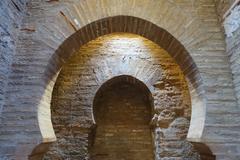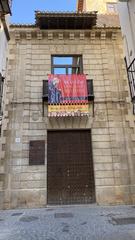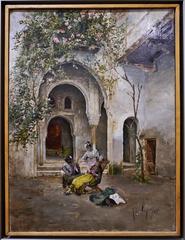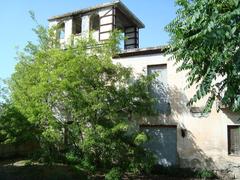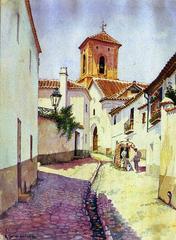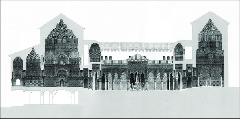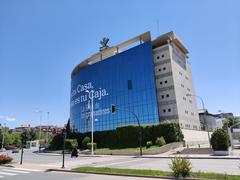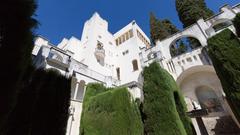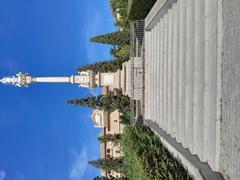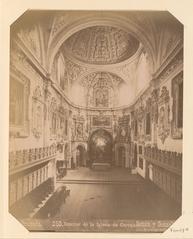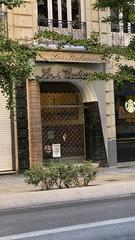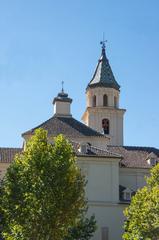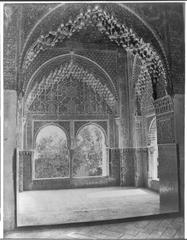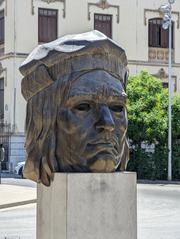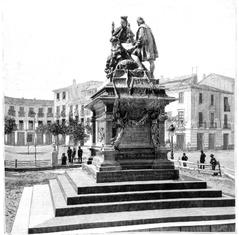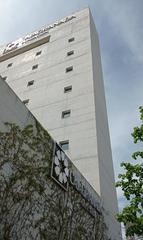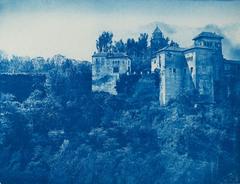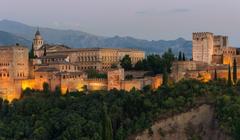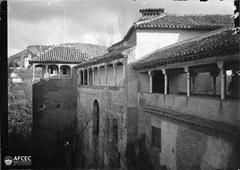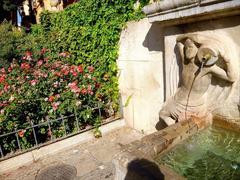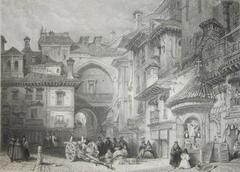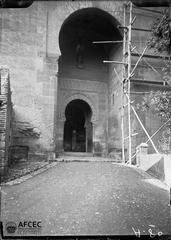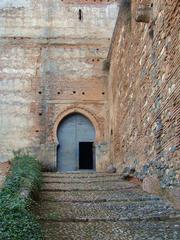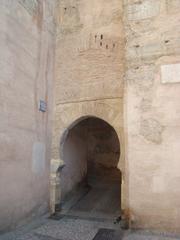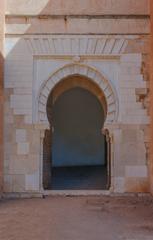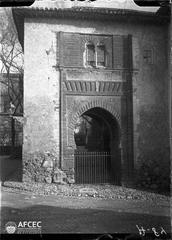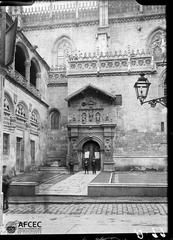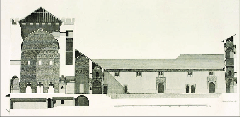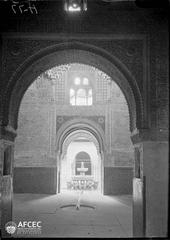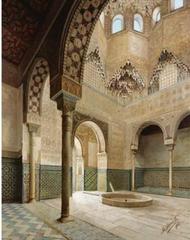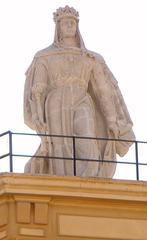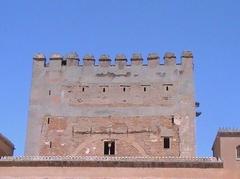Convento de Carmelitas Calzadas Granada: Visiting Hours, Tickets, and Complete Travel Guide
Date: 14/06/2025
Introduction
The Convento de Carmelitas Calzadas is one of Granada’s most storied religious sites, offering a unique combination of spiritual tradition, architectural beauty, and cultural significance. Founded in the early 17th century, the convent stands as a testament to the enduring presence of the Carmelite order and its pivotal role in Granada’s historical and artistic development. This guide provides all the essential information for visiting, including historical context, architectural highlights, practical visitor details, and tips for making the most of your experience in this remarkable setting (Granada Turismo, Patrimonio de Granada, Granada Secreta).
Table of Contents
- Foundation and Early History
- Architectural Evolution and Artistic Heritage
- Religious and Social Role
- Visiting Information: Hours, Tickets & Accessibility
- Travel Tips and Nearby Attractions
- Preservation and Modern-Day Significance
- Notable Figures and Archives
- Community Engagement and Challenges
- Statistical Overview
- Frequently Asked Questions (FAQ)
- Conclusion and Recommendations
- Sources
Foundation and Early History
Established in 1615 as the Convento de San José, the Convento de Carmelitas Calzadas was founded during a period of religious renewal in post-Reconquista Spain. The “shod” Carmelite order, distinct from the “discalced” (barefoot) branch, fostered a contemplative yet less austere lifestyle. This community played a significant role in the spiritual life of Granada, serving as a sanctuary for women and a center for charitable works. The convent’s foundation was supported by local nobility, notably the Loaysa family, whose legacy is visible in its chapels and artistic endowments (Granada Turismo, Guías de Arte).
Architectural Evolution and Artistic Heritage
The convent’s architecture reflects a harmonious transition from late Renaissance to early Baroque styles. Notable features include:
- Church of San José: A single nave with side chapels and an impressive 18th-century gilded main altarpiece (retablo mayor) adorned with Carmelite saints.
- Wooden Coffered Ceilings (Artesonado): Showcasing intricate Mudéjar influence, these ceilings highlight the blend of Christian and Islamic artistic traditions.
- Cloisters: Two tranquil courtyards framed by wooden posts and carved corbels, serving as centers for contemplation and daily monastic life.
- Chapels and Artworks: The Loaysa family chapel hosts the revered “Gran Madre” sculpture by Diego de Mora. The convent houses religious paintings, polychrome statues, and liturgical treasures, some displayed in its small museum.
Murals from the 16th and 17th centuries line the chapel walls, further enriching the site’s artistic patrimony (Patrimonio de Granada, rinconesdegranada.com).
Religious and Social Role
Since its inception, the convent has been integral to Granada’s religious fabric. The resident nuns dedicate their lives to prayer, contemplation, and charitable works. They support themselves by crafting religious textiles and traditional sweets, which are available for purchase—a cherished local tradition. The convent also participates in major religious festivals and processions, including Semana Santa, and serves as a place of refuge for women seeking spiritual solace (Granada Hoy).
Visiting Information: Hours, Tickets & Accessibility
Location: Calle Monjas del Carmen, 8, Realejo district, Granada.
Visiting Hours:
- Monday to Saturday: 10:00 AM – 1:00 PM, 4:00 PM – 6:00 PM
- Closed on Sundays and public holidays.
Tickets:
- Entry is free; donations are welcome to support ongoing maintenance and restoration.
Guided Tours:
- Available upon request in Spanish and English. Advance booking is recommended, especially for groups or during festive periods.
Accessibility:
- Due to the historic structure, wheelchair access is limited. Staff are available to assist visitors with mobility challenges where possible.
Special Notes:
- Photography is generally restricted inside, except during organized tours or events.
Travel Tips and Nearby Attractions
- Getting There: The convent is centrally located, within walking distance from major sites like the Alhambra, Granada Cathedral, and the Albaicín district.
- Nearby Attractions: Explore the Realejo district, Carrera del Darro, and Sacromonte Abbey for a comprehensive cultural experience.
- Best Times to Visit: Weekday mornings or during special open days for a quieter experience.
- Local Delicacies: Don’t miss the opportunity to purchase convent-made sweets, available from the turnstile window during set hours.
Preservation and Modern-Day Significance
Protected as a Bien de Interés Cultural (BIC), the convent is a living monument, home to a small but vibrant Carmelite community. Regular restoration projects, often funded through donations and cultural grants, aim to preserve its architectural and artistic treasures. The convent actively participates in cultural initiatives, educational outreach, and heritage events, fostering community engagement and awareness (Granada Secreta).
Notable Figures and Archives
The convent has historic connections with figures like Mother Ana de San Bartolomé, a leader in Carmelite reform. Its archives, accessible to researchers by appointment, contain valuable documents related to Granada’s religious and social history (Carmelitas Granada).
Community Engagement and Challenges
Facing challenges such as an aging religious community and financial constraints, the convent has embraced cultural tourism. Initiatives like “Open Convents” allow public access to otherwise restricted areas, while the sale of convent sweets and textiles supports their livelihood. Ongoing restoration and educational programs ensure the convent remains a vital part of Granada’s heritage (Ideal Granada).
Statistical Overview
- Year of Foundation: 1615
- Architectural Style: Late Renaissance to Baroque, with Mudéjar elements
- Resident Community: Fewer than 15 nuns (as of 2024)
- Annual Visitors: 5,000–7,000, peaking during festivals and cultural days
- Protected Status: Bien de Interés Cultural (BIC)
Frequently Asked Questions (FAQ)
Q: What are the visiting hours for the Convento de Carmelitas Calzadas?
A: Open Monday to Saturday, 10:00 AM – 1:00 PM and 4:00 PM – 6:00 PM. Closed on Sundays and public holidays.
Q: Is there an entry fee?
A: Entry is free. Donations are appreciated to help preserve the convent.
Q: How do I book a guided tour?
A: Arrange tours via the convent’s website or local tourist offices. Advance booking is recommended.
Q: Is the convent accessible for people with disabilities?
A: Accessibility is limited due to the historic structure. Please contact staff in advance for assistance.
Q: What attractions are nearby?
A: The Alhambra, Granada Cathedral, Albaicín, and the Realejo district are all within easy reach.
Q: Can I buy convent sweets?
A: Yes, traditional sweets are sold at the convent’s turnstile window during set hours.
Conclusion and Recommendations
The Convento de Carmelitas Calzadas is a hidden gem within Granada’s rich historical landscape, offering visitors a profound encounter with the city’s artistic, spiritual, and communal legacy. Whether you are drawn by its architecture, its spiritual resonance, or simply the tranquility of its cloisters, this convent promises a rewarding visit. Support the preservation of this monument by participating in guided tours, making a donation, or purchasing locally made convent sweets. For the latest information on visiting hours, events, and tours, consult official resources and consider using digital guides such as the Audiala app to enhance your cultural experience.
Visuals and Digital Enhancements
Recommended: Add images of the convent’s façade, wooden coffered ceilings, Baroque altarpieces, and cloisters, with descriptive alt text for accessibility and SEO. Embed an interactive map showing the location relative to the Alhambra and other landmarks. For a virtual preview, visit the official website.
Internal and External Links
- Granada Turismo
- Patrimonio de Granada
- Granada Secreta
- Ideal Granada
- rinconesdegranada.com
- exclusivegranada.com
Sources and Further Reading
- Visiting the Convento de Carmelitas Calzadas: History, Tickets, Hours & Granada Historical Sites, 2024, Granada Turismo (Granada Turismo)
- Architectural Evolution and Artistic Heritage, 2024, Patrimonio de Granada (Patrimonio de Granada)
- Preservation and Modern-Day Significance, 2024, Granada Secreta (Granada Secreta)
- Community Engagement and Contemporary Challenges, 2023, Ideal Granada (Ideal Granada)
- Detailed architectural descriptions from rinconesdegranada.com and exclusivegranada.com

